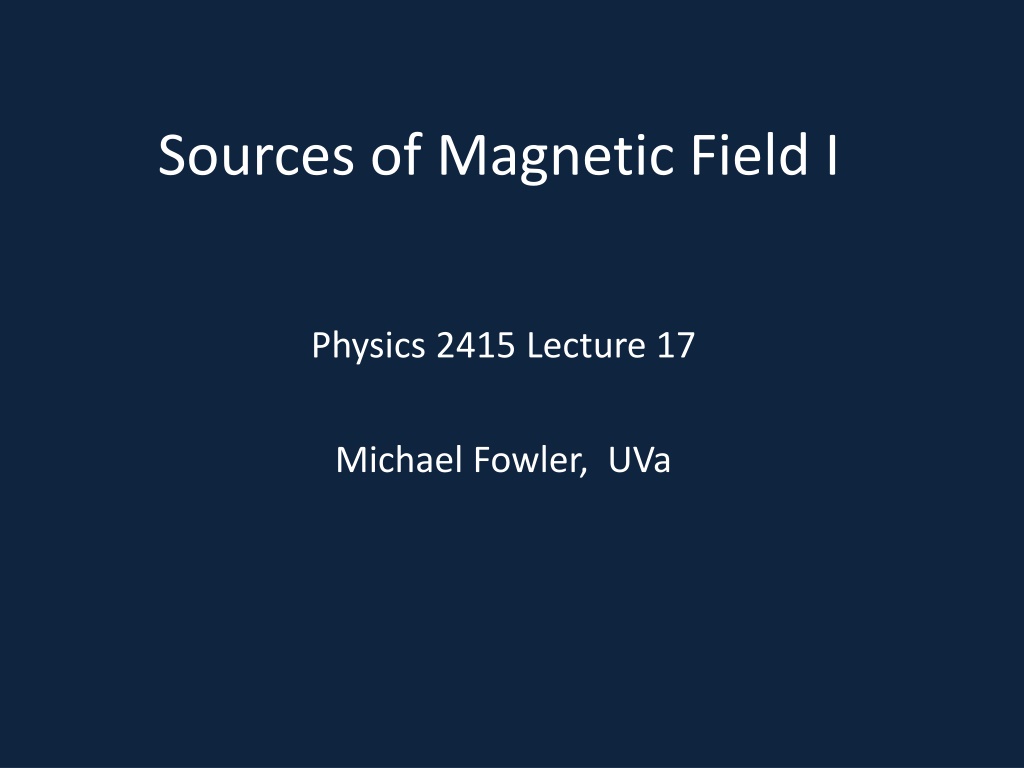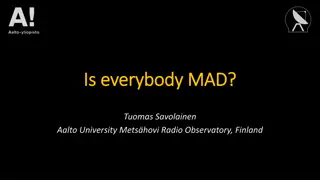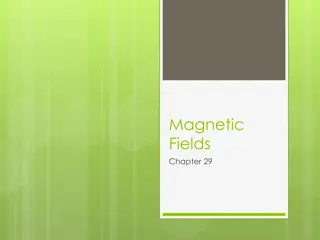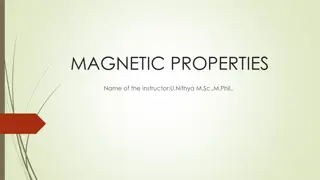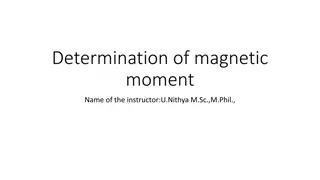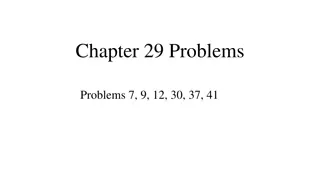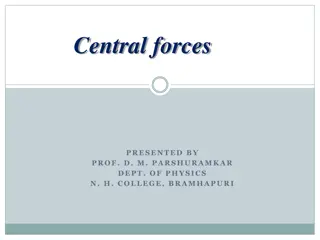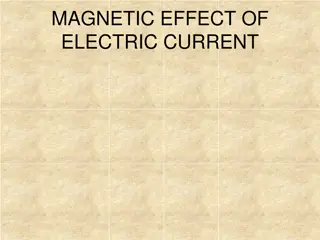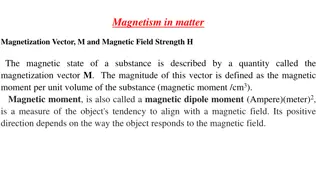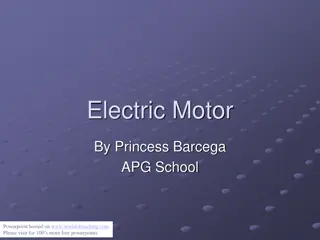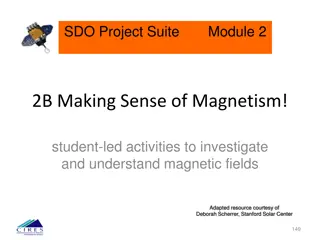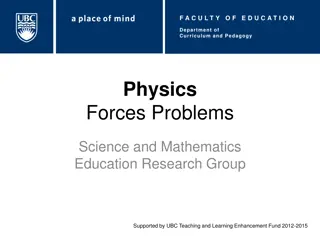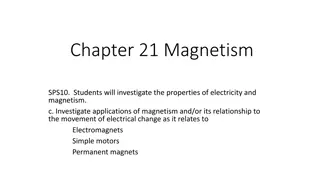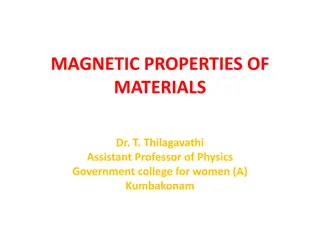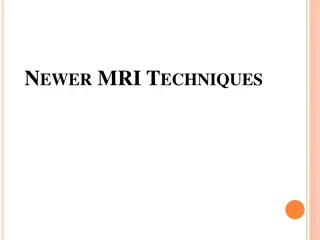Magnetic Field Sources and Forces in Physics Lecture
The sources of magnetic field in Physics 2415 Lecture 17 by Michael Fowler at UVa. Topics include forces between currents, Ampère's Law, and magnetic field from a current in a long straight wire. Understand the interaction between parallel wires carrying currents, the definition of Ampère and Coulomb, and how like currents attract. Visualizations of magnetic field lines for parallel wires offer insights into the behavior of magnetic fields.
Download Presentation

Please find below an Image/Link to download the presentation.
The content on the website is provided AS IS for your information and personal use only. It may not be sold, licensed, or shared on other websites without obtaining consent from the author.If you encounter any issues during the download, it is possible that the publisher has removed the file from their server.
You are allowed to download the files provided on this website for personal or commercial use, subject to the condition that they are used lawfully. All files are the property of their respective owners.
The content on the website is provided AS IS for your information and personal use only. It may not be sold, licensed, or shared on other websites without obtaining consent from the author.
E N D
Presentation Transcript
Sources of Magnetic Field I Physics 2415 Lecture 17 Michael Fowler, UVa
Todays Topics Forces between currents Amp re s Law Fields inside wire and solenoid
Magnetic Field from a Current in a Long Straight Wire The lines of magnetic force are circles around the wire, direction determined by the right hand rule. From experiment, the field strength is proportional to the current, and inversely proportional to distance from the wire: I r The 2 is put in to make some later formulas simpler! = = 7 , 4 10 Tesla m/A 0 B 0 2
Clicker Question Currents flow in the same direction in parallel wires. Do the wires A. Repel each other? B. Attract each other? C. Neither attract nor repel? . I1 I2
Force Between Parallel Wires The field from current I1 is , circling the wire, and the current I2 will feel a force per length , so the force per meter on wire 2 is F = . I2 I r I1 = 0 B 1 2 2I B 1 2 I I d 0 2 towards wire 1, and wire 1 will feel the opposite force. Like currents attract. d
Definition of the Ampre and Coulomb In the formula for the attraction between long parallel wires carrying steady currents = 1 2 I I d 0 F 2 the constant 0 has precisely the value . Fixing 0 defines the unit of current, the amp re, as that current which in a long wire one meter away from an equal current feels a force of 0/2 N/m and 1 amp = 1 coulomb/sec. 7 4 10
Like Currents Attracting The picture on the left is of a copper pipe used as a lightning conductor after it conducted. The parallel currents all attracted each other. On the right, an intense current is sent through a plasma the self compression generates intense heat. The hope is to induce thermonuclear fusion.
Magnetic Field Lines for Parallel Wires The magnetic field at a point is the vector sum of the two fields circling the wires. For equal magnitude currents, the field lines are as shown. Faraday visualized the lines as elastic, trying to minimize their length, and also repelling each other sideways. This helps see how likes attract, opposite currents repel. Interactive animation here Currents in same direction Currents in opposite direction
Magnetohydrodynamic Drive Seawater conducts electricity: the idea behind the Red October silent drive was that an electric current through seawater, with a perpendicular magnetic field, would drive the water in the direction perpendicular to both, moving the water with no vibration but the fluid flow has stability problems, little progress so far...
Clicker Question How long is the stretch of circumference between two radii 0.1 radians apart, if r = 2? A. 0.2 B. 0.4 C. 0.1 D. O.1/ E. 0.1 . circle radius r = 2 d = 0.1 rad
Clicker Answer How long is the stretch of circumference between two radii 0.1 radians apart, if r = 2? A. 0.2 . circle radius r = 2 For a circle of radius r, the length of circumference corresponding to an angle radians is r . Remember 360 = 2 radians, and all the way round is 2 r. d = 0.1 rad
Introducing Ampres Law Suppose we have an infinite straight wire with current I coming perpendicularly out of the screen at the center of the circle. Then we know that the magnetic field from the current has circular lines, and strength ( B = . r d )( ) 0/2 / . I r What is the value of the integral around a circle ? B d
Introducing Ampres Law Current I coming out of page at center, What is the value of the integral around a circle ? From the red bit of the circle, d = rd , and so ( ( 0 / 2 = . ( )( ) = 0/2 / . B I r B B d r d d B d )( ) ) B d = / 2 / I r rd 0 Id from which ( ) B d = = / 2 I d I 0 0 This is Amp re s Law.
Ampres Law: General Path of Integration ( )( ) = 0/2 / B I r . Now take noncircular path shown: We re still finding Look at the little green : circles the wire, so is in the direction of the red bit, and again ( ( 0 / 2 = B d r d d d B B )( ) ) B d = / 2 / I r rd 0 Important! The component of in the direction of has magnitude rd d Id B B d = I 0
Ampres Law: General Case Amp re s Law states that for any magnetic field generated by a steady flow of electrical currents, if we take an arbitrary closed path in space and integrate around it, then . B d = I 0 where now I is the total net current flowing across any surface having the path of integration as its boundary, such as the blue surface shown here.
Field Inside a Wire Assume a wire of circular cross section, radius R, carries a current I uniformly distributed through its volume. By symmetry, the field inside must circle around there can be no component pointing outwards or inwards, that would imply a single magnetic pole at the center of the wire. . I B r R
Field Inside a Wire Apply Amp re s law to the dotted path of radius r inside the wire as shown. The surface roofing this path has area r2, the whole wire has cross- section area R2, so the current flowing through the path is I(r2/R2), and Amp re s law gives 2 B d rB = . I B r R ( ) = 2 2 / , I r R 0 I r = 0 B 2 2 R
Magnetic Field Inside a Solenoid Take a rectangular Amp rian path as shown. Assume the external magnetic field negligible, and the field inside parallel to the axis (a good approximation for a long solenoid). For current I, n turns/meter, B d B = = n I rectangular path of integration 0 = B nI 0
